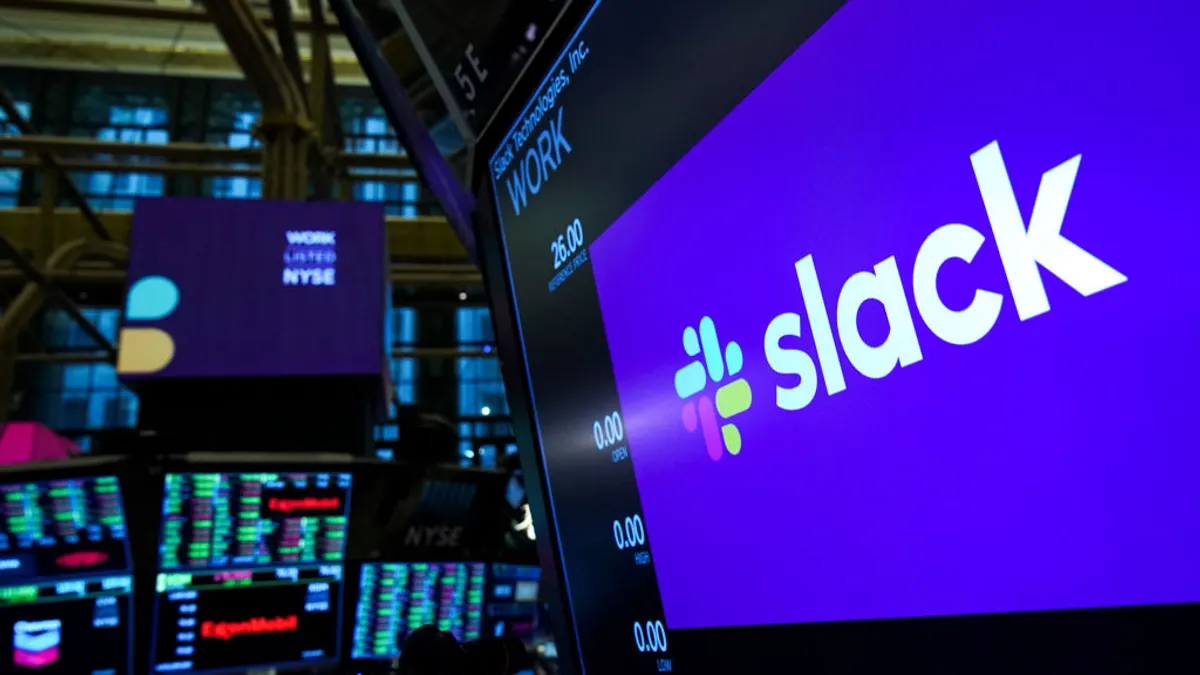Slack relieved employees of some duties last week in order to dedicate time toward achieving “Ranger status” on parent company Salesforce’s Trailhead platform in a move that could become a more common feature of learning and development programs.
Ranger status represents one of the many ranks employees can obtain on Trailhead. According to Salesforce, Ranger rank is obtained by earning a combination of 100 badges and 50,000 points by completing modules and challenges that cover a variety of subjects, but Trailhead is primarily used to train workers on Salesforce tools and technology.
In an email to HR Dive, Slack confirmed that it held “Ranger Week,” as first reported by Fortune, but clarified that employees were still asked to take care of customers. The company said it operated at full capacity during the week of training, but asked workers to prioritize completing the training over internal meetings and other work that can be done later.
Fortune cited sources inside Slack who said the Trailhead training requirements were “met with some disdain” from some employees and that the company’s engineers had found workarounds to completing the training, such as writing code to automate clicking through certain modules. Fortune reported that a “large percent” of Slack’s 3,000 or so employees had not made Ranger status, which requires roughly 40 hours of learning on the platform.
Slack said it did not have evidence to support Fortune’s reporting of workarounds. The company also said it is hoping to have all employees attain Ranger status by the end of its fiscal year, and that it regularly schedules weeks during which employees can focus on nonurgent, important work.
A more targeted approach to L&D
Salesforce and Slack are not the first organizations to dedicate time to training. But in the drive to ensure employees are properly skilled to take advantage of technological advancements like artificial intelligence, the pair may be part of a growing trend, said Sheilin Herrick, global solution director at people science platform SHL.
“Historically, this has been a very broad area, and individual contributors were kind of left on their own to decide how to close skill gaps,” Herrick said. “We’re now seeing organizations start to realize that that is not going to have the return on investment that was intended.”
A dedicated block of time to complete upskilling- and reskilling-focused learning may help employees realize that there are opportunities for mobility and career growth within their organizations, she continued.
“Employees should be given the leeway to do that,” Herrick said. “That is something that, when it’s clearly connected to the skills that need to be added to achieve the company’s strategic initiatives, employees would be enthusiastic about spending that time.”
Not that workers necessarily need reminders about the importance of updating their skill sets. A recent report by professional education company Emeritus found that 80% of professionals said upskilling would help them stand out among co-workers, while 74% said they would choose to work for organizations that invested in their education over those that didn’t.
But offering training in and of itself won’t always draw workers’ attention or interest, Herrick said. L&D teams may need to work in concert with managers to assess an employee’s potential for mobility, and which skills will help the employee contribute to future personal and organizational goals.
“That linkage may not always be clear, and I’m seeing L&D and talent teams get better and more intentional in order to succeed on their growth strategies,” she added.
Employers, meanwhile, need to provide guidance on which types of training are most valuable to the organization, said Herrick, who noted that data analytics, data science and machine learning are generally the most significant skills employers need to move quickly to invest in.
“Middle managers need the guidance and systematic input provided by the overall organization to provide the right targeted learning opportunities to the individual employee,” she said. “I don’t necessarily think it’s enough for a manager to simply encourage L&D in an interest area, because the employee may spend a lot of time in an interest area that doesn’t relate to what the company needs. That could be disheartening.”





















